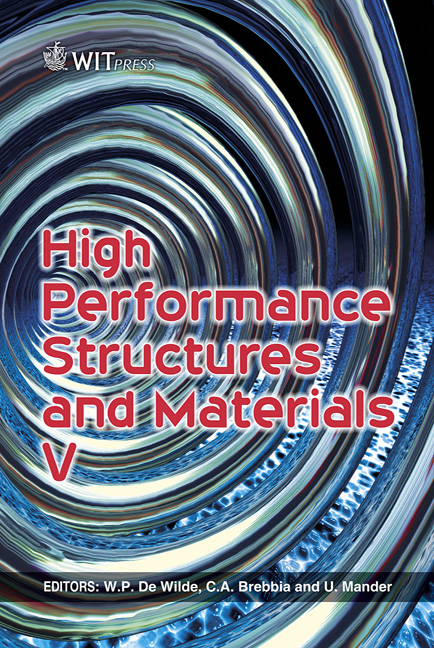Fracture Behaviour Of Natural Fibre Reinforced Composites
Price
Free (open access)
Transaction
Volume
112
Pages
10
Page Range
221 - 230
Published
2010
Size
964 kb
Paper DOI
10.2495/HPSM100211
Copyright
WIT Press
Author(s)
H. Takagi & Y. Hagiwara
Abstract
This paper deals with the microfracture behaviour of natural fibre reinforced composite materials. The acoustic emission (AE) method was applied to detect various micro-scale energy release phenomena during tensile deformation not only of Manila hemp fibre, but also of three kinds of composites with three different fibre orientation angles, namely 0, 45, and 90 degree. In the case of Manila hemp fibre testing, low amplitude AE events (40–60 dB) are measured at an intermediate strain range, and high amplitude events are also measured at a final fracture stage. In the case of 0 degree composite, AE signals having a wide range of amplitude distribution are measured from the beginning of deformation, and the AE activity becomes significant with further tensile deformation. On the other hand, a few AE data with low amplitude are measured in 45 and 90 degree composites. In conclusion, low and high amplitude AE events observed during tensile deformation of natural fibre composites are derived from fibre splitting and fibre fracture, respectively. Keywords: microfracture, acoustic emission, starch based resin, hemp fibre, fibre fracture, debonding. 1 Introduction Recently, much of the research on natural fibre composites has been carried out in Europe, North America, and Asia and focused on the enhancement of their mechanical properties [1–13]. The natural fibre composites are the composite material that usually consists of biodegradable resin matrix mainly derived from natural resources and natural plant fibre as reinforcement. Therefore, they are derived from yearly renewable resources, and at the same time their disposal
Keywords
microfracture, acoustic emission, starch based resin, hemp fibre, fibre fracture, debonding





